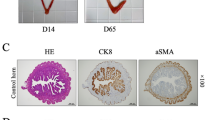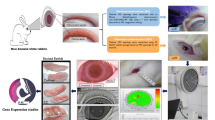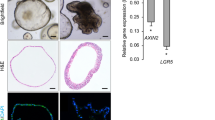Abstract
WHILE investigating the cytology and cytochemistry of the adenohypophysis of the female rabbit, it was discovered that the fixation of whole pituitaries by immersion in the fixative was unsatisfactory. The reaction of the basophil cells to the periodic acid–Schiff procedure and to the Gram technique was extremely inconstant. It was clear that the total number of basophils was not being demonstrated and there was often much diffuse coloration of cells the exact nature of which it was difficult to determine. Commonly, also, a peripheral rind of distorted cells was produced, the staining of which was atypical.
This is a preview of subscription content, access via your institution
Access options
Subscribe to this journal
Receive 51 print issues and online access
$199.00 per year
only $3.90 per issue
Buy this article
- Purchase on SpringerLink
- Instant access to full article PDF
Prices may be subject to local taxes which are calculated during checkout
Similar content being viewed by others
References
Catchpole, H. R., J. Endocrinol., 6, 218 (1949).
Hays, E. E., and Steelman, S. L., in “The Hormones”, vol. 3, edited by G. Pincus and K. V. Thimann (New York, 1955).
Author information
Authors and Affiliations
Rights and permissions
About this article
Cite this article
ALLANSON, M., FOSTER, C. & MENZIES, G. Fixation of the Rabbit Pituitary Gland. Nature 180, 766 (1957). https://doi.org/10.1038/180766a0
Issue date:
DOI: https://doi.org/10.1038/180766a0



